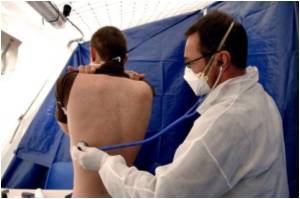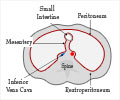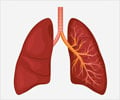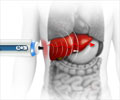About
Cystic fibrosis (CF) is a genetic disease that primarily affects the secretary glands, such as the mucus and the sweat glands, lungs, intestine, pancreas, liver, sinuses and sex organs.Classical symptoms of cystic fibrosis is salty sweat and a mucus build-up leading to blocked airways. It also causes blockage of the pancreatic ducts leading to swollen stomach, constipation and intestinal gas as well as general pain and discomfort.
Earlier the life of a patient with CF was greatly compromised in terms of quality. Now, however, plenty of research carried out in this field has ensured a vast improvement in the quality of life of these patients.
Genetics
A mutation in the gene CFTR causes cystic fibrosis. This gene is responsible for a protein which controls the movement of salt and water in and out of body cells.
People with CF inherit a single copy of the faulty gene from each parent who, usually, do not have the disease themselves.
Later research showed that CFTR is an anion channel located in the apical membrane of epithelial cells lining several organs, including the airways.
Research has now identified more than a 1000 mutations that caused cystic fibrosis, of which the most common one is ÄF508.This mutation results in the removal of amino acid phenylalanine at position 508 and accounts for nearly 70% of cystic fibrosis alleles (copies of the same gene).
It has been estimated that on an average 90% of persons afflicted with CF carry at least one copy of ÄF508mutation.
Another mutation, G551D-CFTR, replaces a glycine residue with an aspartate residue at position 551.This mutation accounts for 4 to 5% of CF gene alleles.
Screening for CFTR mutations in newborns is a norm in the USA and also in the developed countries of Europe. This move has proved to be a great blessing for many with CF as it has paved the way for early intervention.
Managing Cystic Fibrosis - New Methods
Therapies for CF have conventionally focused on alleviating symptoms and improving lives.
In the recent issue of NEJM (Nov. 2010) a study carried out by Accurso and his colleagues has been described in which the cystic fibrosis trans membrane conductance regulator (CFTR) has been directly targeted with a new and safe drug.
Discoveries revealing the role of multiple mutations in CF disease prompted researchers to search for smaller molecules to correct the defects within CFTR.
Towards this end, scientists at Vertex pharmaceuticals developed an oral drug, with the financial backing and scientific support from Cystic Fibrosis Foundation.
The drug, VX-770, facilitates the opening of G551D-CFTR channels in all body cells, and increases chloride and bicarbonate flow across epithelial apical membranes.
Testing VX -770
The new drug VX-770 was tested in patients bearing a G551D-CFTR mutation after 14 days and also after 28 days of treatment.The effect of the drug was assessed in relation to CFTR function and disease manifestations
CFTR activity in nasal epithelia and sweat glands was examined and it was revealed that there was partial restoration of chloride conductance in those cells.
Similarly an assessment of chloride concentration in the sweat revealed partial restoration of chloride transport in the sweat glands of these patients after taking the drug.
It was also found that VX-770 improved lung functioning as was seen in the increase in the forced expiratory volume in 1 second (FEV1).
All the above results are, no doubt, extremely encouraging.
Pitfalls
Some of the problems that CF research faces include the following
• It is almost impossible to quantitatively assay CFTR function in vivo
•The nasal potential difference and sweat chloride concentration involve other complex transport processes-it hardly reveals anything about CFTR chloride permeability
• CFTR activity is normal in people who are heterozygous for CFTR mutations
• is of value only in those with established lung disease and does not provide information regarding those with early disease
• CFTR function varies in different organs such as lung, liver and pancreas. This makes it difficult to assay CFTR function invivo, especially in early stage disease
Conclusion
Despite encouraging prospects more research must be carried out for longer periods of time on more number of patients.
In vitro studies on the efficacy of VX-770 in patients with other CFTR mutations, such CFTR-ÄF508, have been promising. However, it must be tested invivo.
The usefulness of this drug on other types of mutations must be investigated.
The possibility of treating CF with a combination of other such small molecules must also be further investigated.
More work needs to be carried out to discover more numbers of sensitive and quantitative biomarkers as treatment of CF patients would largely benefit from this.
This research involving VX-770 denotes a milestone on the road to better prospects for patients with Cystic Fibrosis. There might be a cure around the corner-who knows?
Source-Medindia













